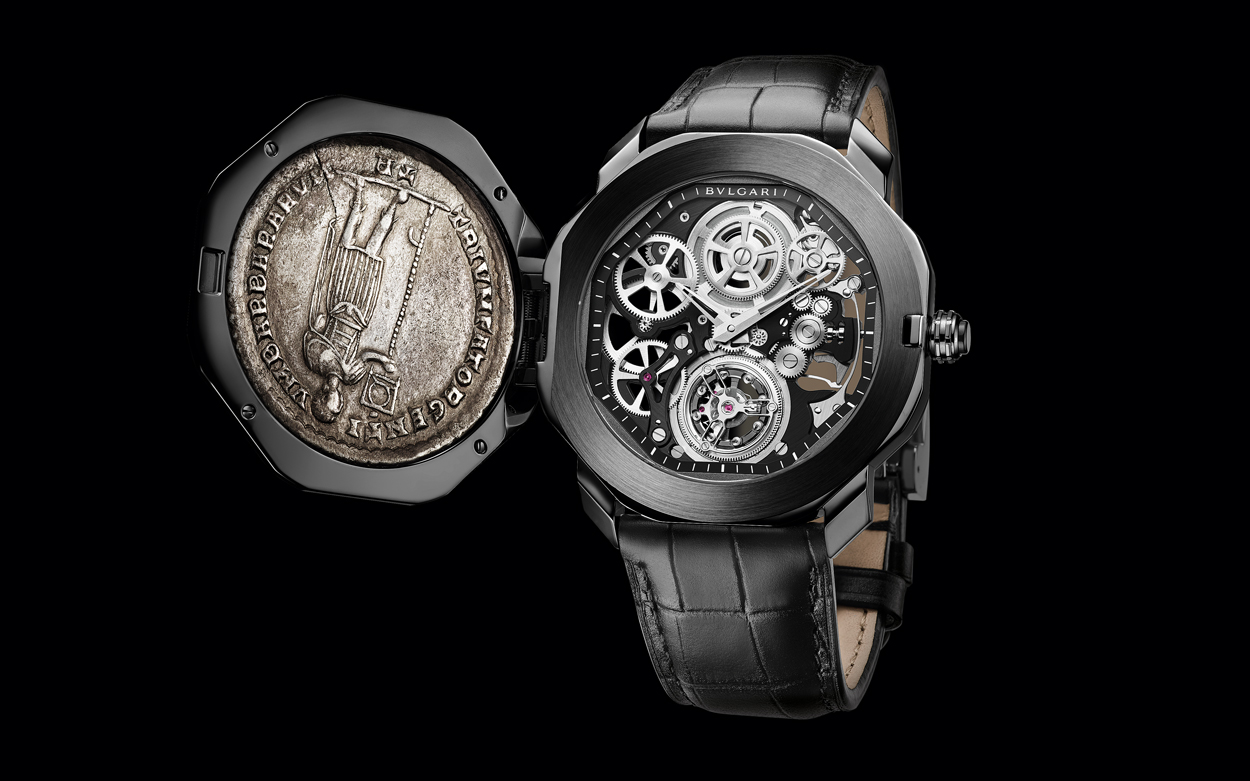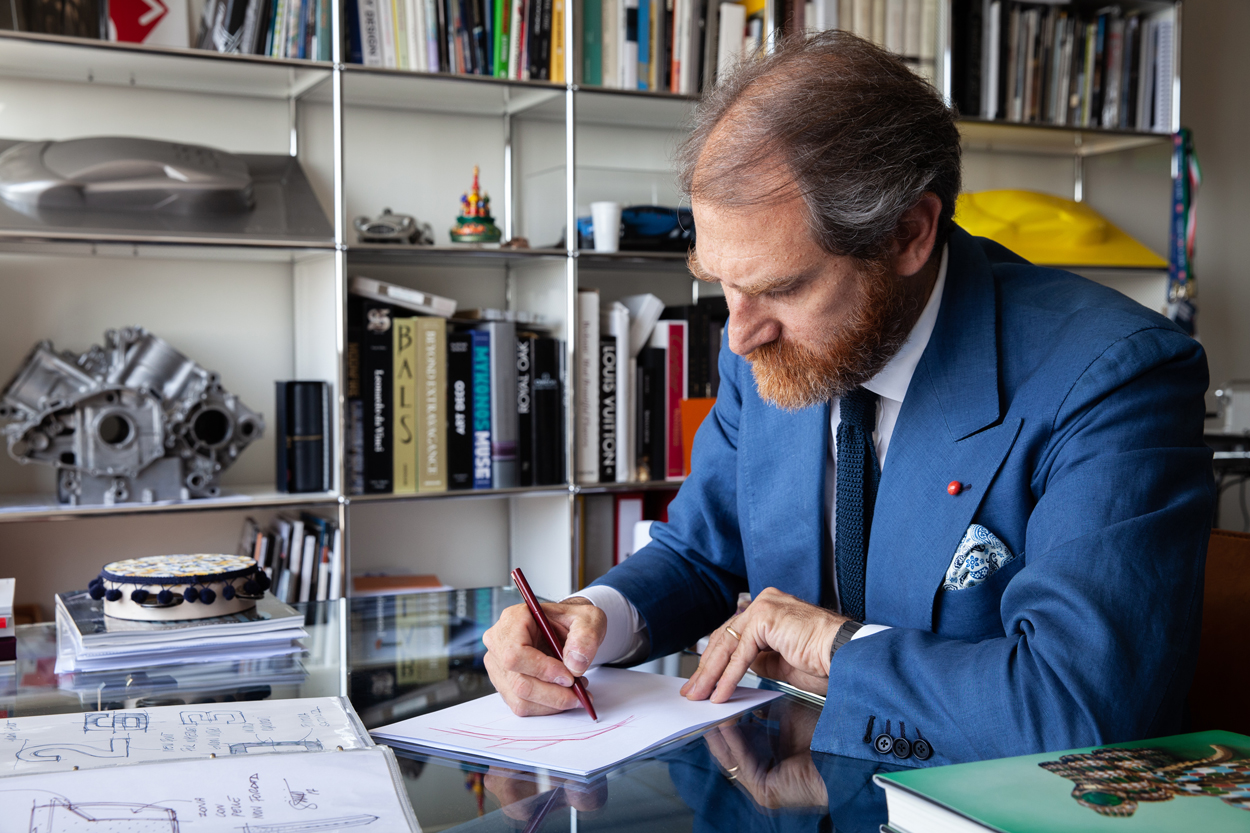From porcelain jewelry to watch bands inspired by snakes and gas pipes, Bulgari has always been a brand committed to bold design. But for its latest watch—the Octo Roma Monete, an ultra-thin, manual-winding tourbillon whose most striking feature is the ancient Roman coin concealing its face—the inspiration came not from Bulgari’s design team, but rather a client.
“A few years ago, a very loyal client came to me and said, ‘I would love to have a watch with a coin on top,’” Fabrizio Buonamassa says over the phone from his office in Neuchâtel, Switzerland, where the 47-year-old Italian leads Bulgari’s horology design team. “So I said to Mr. Paolo Bulgari, ‘this very loyal client asked me to produce a watch with a coin,’ and Mr. Paolo said, ‘why don’t you use the coin as the cover of the watch?’”
Of course figuring out how to bring together the world’s thinnest tourbillon caliber, the iconic Octo case, and then topping the whole timepiece off with an extremely rare Roman medallion is a little bit more complicated than those two choice encounters suggest. But before we get there, it’s first important to understand Fabrizio Buonamassa, director of watch design, a man whose own design history has as much to do with the Octo Roma Monete as does Bulgari’s.
Born in Naples and reared in Rome, Buonamassa’s heritage is an eclectic one. The son of a Hertz executive, he was drawn to cars at an early age—the distinct shapes, the clean lines—as well as comic books. “I liked Superman, Batman, anything Marvel,” he says. “But it was for the drawings, not for the story. I was obsessed with the sketches, the quality of the stroke.”
These obsessions led Buonamassa to design school, and later FIAT, where he cut his teeth in the corporate world dreaming up the interiors and exteriors for the Italian auto-making giant. Over the years he’s dabbled in designing everything from sunglasses to shoes, but it was his first post at Bulgari in 2001 that’s proved pivotal.
“I think a designer is like a writer,” Buonamassa says, thoughtfully choosing words that lilt with his Roman accent. “When you read a book you read all the experiences about the writer. When you see a sketch you see all the things that I have in mind, all my background, all my heritage.”
“It’s like a military object, a Formula 1 car, a jet,” Buonamassa says. You need just the object and the components that have to work in a proper way, you don’t have enough room for decorative elements.
Gone was the case back and the regulator assembly, while the case itself was constructed from sand blasted titanium and given a matte finish. The result? A strikingly handsome line of watches—from military repeaters to skeleton tourbillons, all with an eye-catching round shape layered over the octagonal design—that have broken numerous records for thinness. As is the case with all his creations, the Finissimo is a testament to Buonamassa’s form follows function aesthetic.
Buonamassa worked with a team of experts in London to select the medallion, opting for an extremely rare—and nearly 2,000 year old—coin depicting Roman Emperor Constantius II. The medallions were made to celebrate specific events in Roman history, typically military victories, and today can only be found in private coin collections. Due to the coins rarity, only a select few Monetes will be produced each year, somewhere between three and six, and the price tag is equally rarified.
“When you have a new idea that is followed by a new aesthetic, you make bingo,” Buonamassa says. “Otherwise it’s just a decoration, it’s not a true idea, it’s not timeless.”
(Photos courtesy Bulgari)


